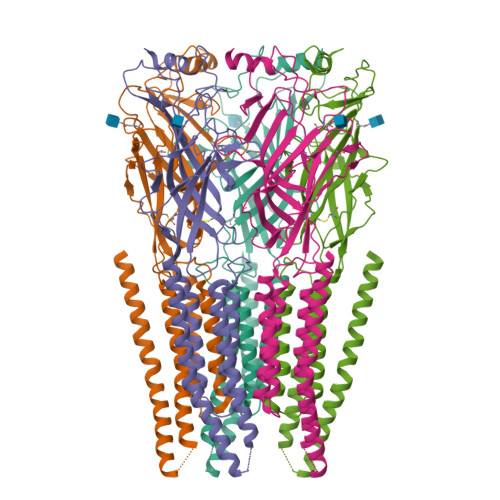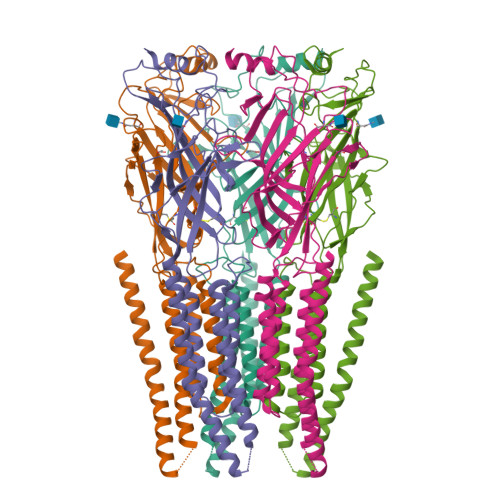Structural basis for cannabinoid-induced potentiation of alpha1-glycine receptors in lipid nanodiscs.
Kumar, A., Kindig, K., Rao, S., Zaki, A.M., Basak, S., Sansom, M.S.P., Biggin, P.C., Chakrapani, S.(2022) Nat Commun 13: 4862-4862
- PubMed: 35982060
- DOI: https://doi.org/10.1038/s41467-022-32594-5
- Primary Citation of Related Structures:
7M6M, 7M6N, 7M6O, 7M6P, 7M6Q, 7M6R, 7M6S - PubMed Abstract:
Nociception and motor coordination are critically governed by glycine receptor (GlyR) function at inhibitory synapses. Consequentially, GlyRs are attractive targets in the management of chronic pain and in the treatment of several neurological disorders. High-resolution mechanistic details of GlyR function and its modulation are just emerging. While it has been known that cannabinoids such as Δ 9 -tetrahydrocannabinol (THC), the principal psychoactive constituent in marijuana, potentiate GlyR in the therapeutically relevant concentration range, the molecular mechanism underlying this effect is still not understood. Here, we present Cryo-EM structures of full-length GlyR reconstituted into lipid nanodisc in complex with THC under varying concentrations of glycine. The GlyR-THC complexes are captured in multiple conformational states that reveal the basis for THC-mediated potentiation, manifested as different extents of opening at the level of the channel pore. Taken together, these structural findings, combined with molecular dynamics simulations and functional analysis, provide insights into the potential THC binding site and the allosteric coupling to the channel pore.
Organizational Affiliation:
Department of Physiology and Biophysics, School of Medicine, Case Western Reserve University, Cleveland, OH, USA.


















